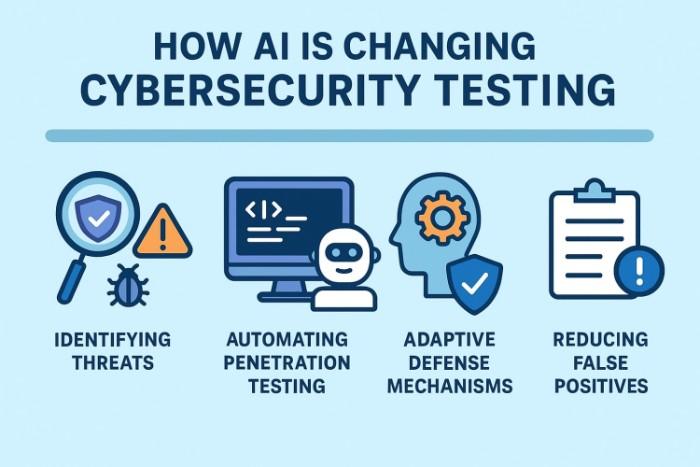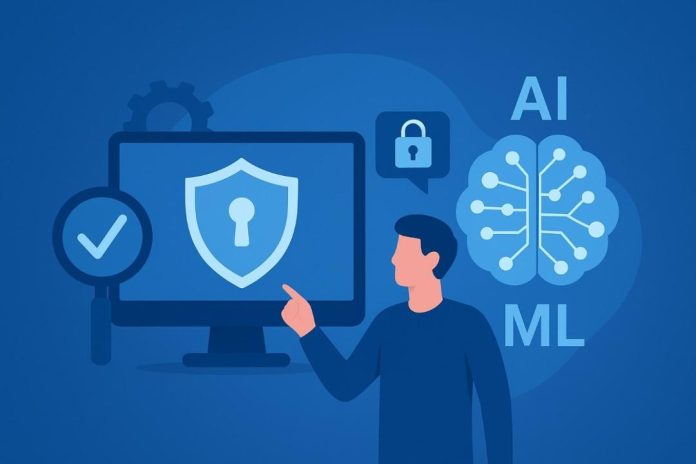In an age where cyber threats have evolved at an unprecedented rate, the traditional quality assurance methods can hardly keep up with sophisticated attacks. Organizations around the world are turning to artificial intelligence and machine learning to transform their cybersecurity QA processes and build more resilient, adaptive security frameworks.
Table of contents
The Increasing Cybersecurity Challenge
The digital landscape has become more hostile. According to IBM’s Cost of a Data Breach Report, the average cost of a data breach was $4.45 million in 2023, a 15% increase over the previous 3 years. Meanwhile, Cybersecurity Ventures predicts that cybercrime will cost the world $10.5 trillion annually by 2025, making it more profitable than the global trade in all major illegal drugs combined.
Traditional QA approaches, while still valuable, cannot keep up with the speed and complexity of modern threats. This is where AI and machine learning come in, providing capabilities that revolutionize how organizations detect, prevent, and respond to security vulnerabilities.
How AI is Changing Cybersecurity Testing

Artificial intelligence offers a number of transformative capabilities for security testing that fundamentally alter how organizations approach threat detection and vulnerability management. These technologies allow security teams to work smarter, faster and better than ever before.
Automated Threat Detection
Machine learning algorithms are particularly good at identifying patterns that human analysts might miss. By analyzing large volumes of network traffic, user behavior, and system logs, AI systems can identify anomalies that indicate potential security breaches. These systems can learn from each interaction and continuously improve their accuracy and reduce false positives.
Research from Capgemini shows that 69% of organizations believe AI is needed to respond to cyberattacks, and 61% say they cannot detect attempts to breach without AI technologies. This statistic underscores the importance of machine learning in modern security infrastructure.
Predictive Vulnerability Assessment
One of the most powerful ways that AI can be used in cybersecurity QA is through predictive analysis. Machine learning models can be used to analyze historical vulnerability data to predict where new security gaps may be likely to occur. This proactive approach enables security teams to address potential weaknesses before attackers can exploit them.
The combination of AI and manual qa testing services forms a complete security testing framework. While AI handles pattern recognition and large-scale analysis, human testers provide contextual understanding and creative problem-solving that machines cannot replicate.
Essential Advantages of AI-Based Security QA
Organizations that use AI in their cybersecurity QA processes enjoy many benefits:
- Improved detection rates with reduced false positives
- Rapid response time to emerging threats
- Continuous monitoring without human fatigue
- Scalable analysis of complex infrastructure
- Better resource distribution for security teams
A study by the Ponemon Institute found that organizations that use AI and automation extensively in their security operations saved an average of $1.76 million compared to those that do not. This shows the actual return on investment that AI-driven security offers.
Real-Time Analysis and Response
Traditional security testing is often based on a set schedule, leaving gaps between tests during which vulnerabilities can be exploited. AI-powered systems offer continuous monitoring and real-time analysis, making it much harder for attackers to get a foothold.
These systems can process millions of events per second, correlating data from multiple sources to identify sophisticated attack patterns. When threats are detected, automated response mechanisms can immediately implement countermeasures, often before human analysts are even aware of the intrusion attempt.
Implementing AI in Your Security QA Strategy
Successfully incorporating AI into cybersecurity QA requires a systematic approach. Organizations should take the following important steps:
- Evaluate existing security infrastructure and identify areas where AI can offer the greatest value
- Choose the right machine learning tools that can meet specific security needs
- Establish baseline metrics to measure improvement in the detection and response of threats
- Train security teams to work along with AI systems effectively
- Introduce continual feedback loops to enhance model accuracy over time
- Regularly audit AI decisions to ensure they are in line with security policies
Balancing Automation and Human Expertise
While the use of AI significantly enhances security capabilities, it should be used in support of, not as a substitute for, human expertise. Security professionals have critical thinking, ethical judgment, and contextual awareness that AI systems lack. The best cybersecurity QA programs use a combination of automated analysis and expert human oversight.
Gartner predicts that by 2025, 60% of organizations will use cybersecurity risk as a primary determinant in conducting third-party transactions and business engagements. This trend highlights the importance of robust, AI-based security testing to maintain business relationships and market trust.
Challenges and Considerations
Despite the massive benefits, there are obstacles to implementing AI in cybersecurity QA. Organizations must overcome several challenges to ensure their AI-powered security systems deliver reliable results without introducing new vulnerabilities.
Quality of Data and Training the Model
AI systems are only as good as the data they are learning from. Organizations need to make sure they have access to high-quality, diverse datasets to train their machine learning models. Poor data results in inaccurate predictions and missed threats.
Adversarial Attacks on Artificial Intelligence Systems
Sophisticated attackers are now creating ways to trick AI security systems. These adversarial attacks manipulate input data to cause machine learning models to misclassify. Security teams need to continually update their AI systems to protect against these evolving tactics.
The Future of Cybersecurity QA with AI
The intersection of AI, machine learning, and cybersecurity QA is a fundamental shift in how organizations protect their digital assets. As threat actors get more sophisticated, security testing must keep up.
Emerging technologies such as federated learning and explainable AI hold the promise of strengthening security capabilities while addressing privacy concerns and achieving greater transparency. Organizations that adopt these innovations will be better equipped to defend against future cyber threats.
According to MarketsandMarkets, the AI in cybersecurity market is projected to reach $60.6 billion by 2028, up from $22.4 billion in 2023, growing at a compound annual growth rate of 21.9%. This explosive growth is a sign of increasing reliance on AI-based solutions for security testing and threat management.
Conclusion
Integrating AI and machine learning into cybersecurity QA processes is no longer optional; it’s a must if organizations are looking to protect themselves in an increasingly dangerous digital environment. By leveraging automated intelligence and human expertise, companies can create security testing frameworks that are adaptive, efficient, and capable of defending against even the most sophisticated threats.
The organizations that succeed in this new landscape will be those that don’t see AI as a replacement for traditional security practices, but as a powerful enhancement that elevates their entire cybersecurity posture. The future of security testing is in this intelligent combination of human insight and machine capability.










